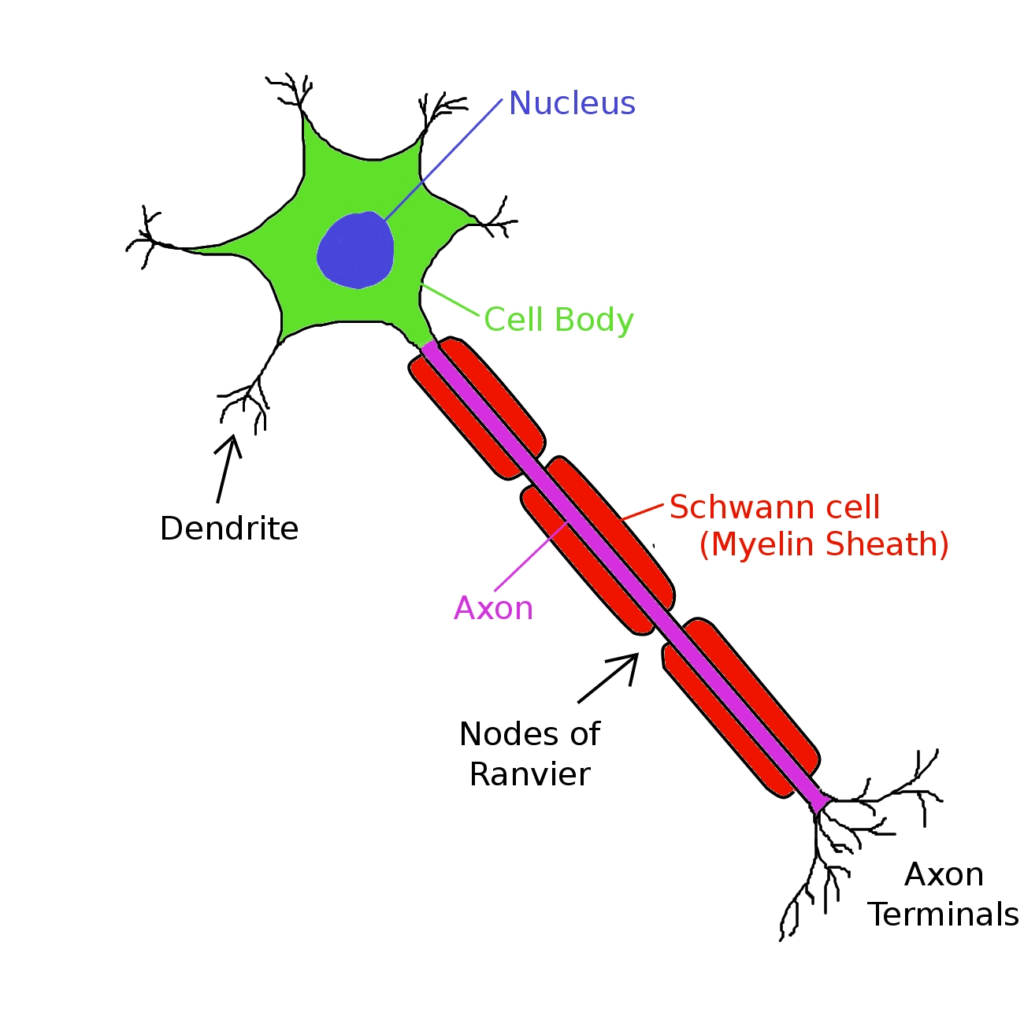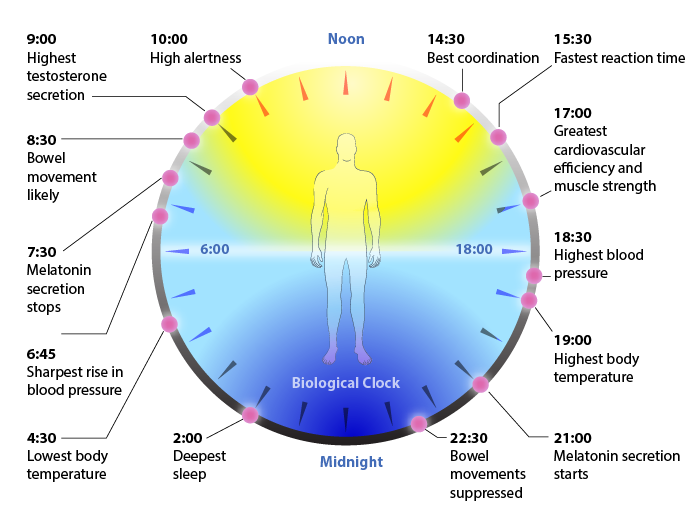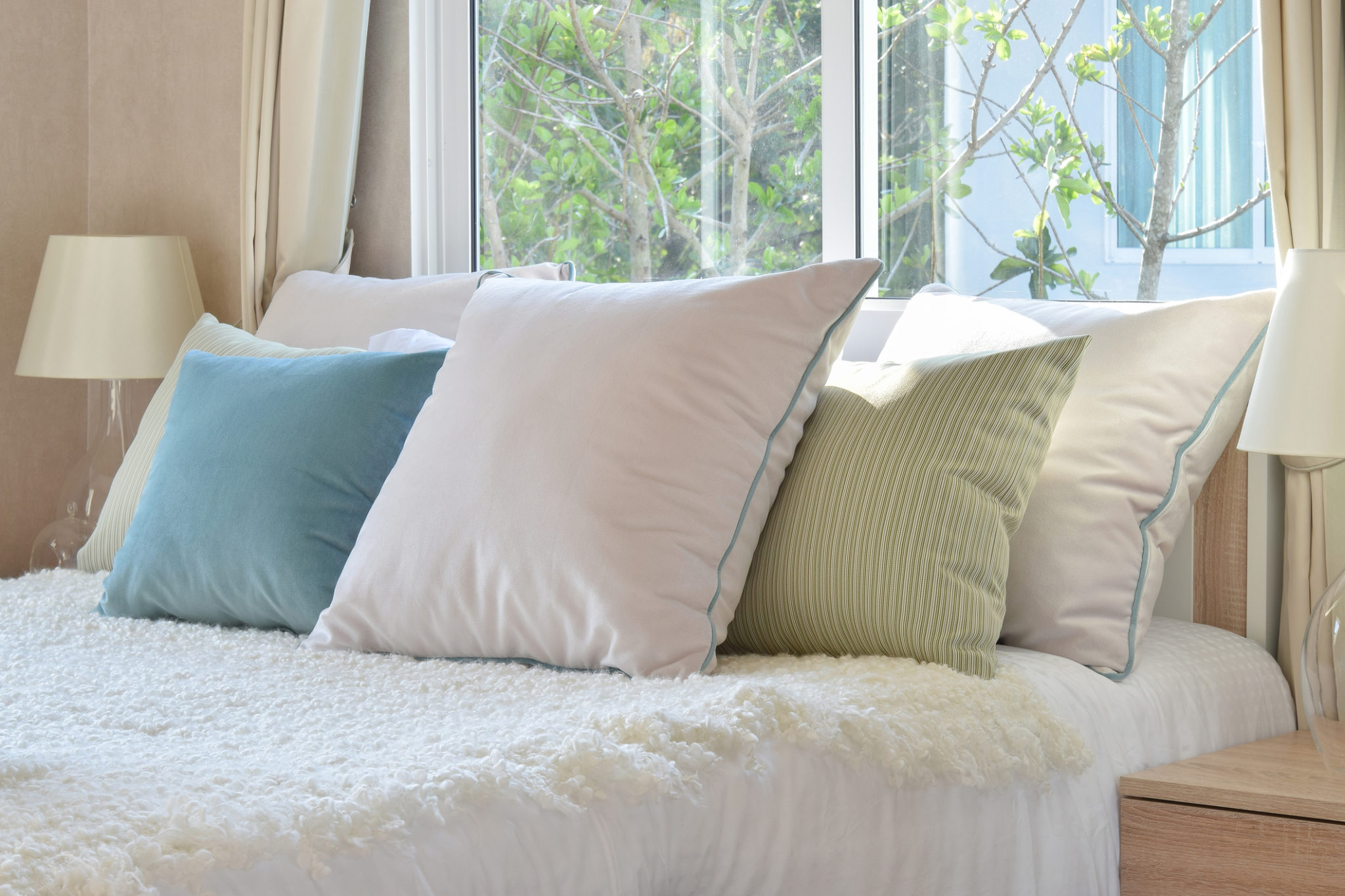One of my favorite topics to research and to write about is how sleep (or lack thereof) affects our bodies. And, the more I learn about the necessity of life, the more I’m convinced that getting enough of it is as big a deal, if not moreso, than how we eat.
In my geeky opinion, one of the coolest things about sleep is how our body regulates our sleep-wake cycles. Have you ever thought about why you feel tired and how your body actually turns your consciousness off so that you go to sleep? So, I wanted to share this hot-off-the-presses science with you!
Hot Off the Press: the Science of Going to Sleep
Researchers at Northwestern have been focusing on the activity of a specific circuit of neurons (brain cells) that seem to be related to your circadian rhythm (your body’s internal clock). This new paper, published in one of the most prestigious scientific journals, Cell, has identified that the activity of these neurons (and therefore our sleep-wake cycle) is controlled entirely by the activity of simple channels on the surface membrane of the neurons.
Okay, let’s take a step backwards to go over some important neurophysiology (here’s where I admit that I used to fall asleep in my neurophysiology classes thanks to my professor’s droning voice… irony? I only recently discovered just how cool all that information I slept through was and had to go back to my old textbooks to teach it all to myself!).
Save 80% Off the Foundations of Health
Expand your health knowledge on a wide range of topics relevant to you, from how to evaluate scientific studies, to therapeutic diet and lifestyle, to leaky gut and gut microbiome health, to sustainable weight loss, and much more!!!

Our brains are made up of a network of neurons of many types. And neurons are really cool cells. A typical neuron consists of a cell body (the green part in the diagram), dendrites (the black branches off the cell body), and an axon (the red part). The purpose of dendrites is to receive signals from other neurons in order for the neuron to pass it on. Because one neuron can have many dendrites connecting to many other neurons, there’s an amazing complexity in neural signaling that can happen (woot, go brain!). The axon extends from the cell body (as much as a meter!!!!) and connect to other cells, acting as the primary transmission lines of the nervous system.
The most “basic” neurons communicate using a combination of electrical and chemical signals. When a neuron is activated (sometimes people will say the neuron is “turned on” or “stimulated”), an electrical signal travels down the arm-like axon of the cell, where the electrical impulse—called an action potential—triggers the release of chemical compounds from the axon terminus called neurotransmitters. The neurotransmitters travel a short distance and bind to the adjacent neuron at its dendrites, either turning it on (starting another electrical signal) or off (preventing an electrical signal), depending on the neurotransmitters released, what type of neurotransmitter receptors are present on the receiving neuron, and something called membrane potential.
Because of the electrical component to neuron signaling, this process depends on the balance of ions (electrically charged atoms) between the cell and its surroundings. When the difference in ions between the inside and outside of the cell is greater, there is a stronger electrical signal, and the cell is more active and able to easily communicate with neighboring cells. Channels on the surface of the neuron’s membranes determine which ions are allowed into and out of the cell, making it more or less active (this is called a cell’s “membrane potential”).
Why does this matter? It turns out that our sleep is essentially regulated by this relatively simple mechanism. Researchers have identified that there is a small bundle of neurons that are connected to our circadian rhythm (more on that below), and the activity of these neurons is turned off and on by differences in the membrane potential. These differences in membrane potential that allow a neuron to be turned on or off are determined by sodium and potassium pumps, which are themselves regulated by time of day. During the day, more sodium ions are pumped into the cell and create more membrane potential, making the neurons more excitable and telling our bodies that it is time to be awake. At night, potassium pumps regulate the membrane potential such that the neurons are less excitable. When this happens, our brains are able to go into “sleep mode.” Without this simple bi-cycle, our sleep-wake cycle could never be regulated. It seems simple and yet scientists just nailed down this process a couple weeks ago!
The authors didn’t answer my follow-up question when I read this, but given the symptoms of excessive dietary sodium and the symptoms of potassium deficiency, I’m thinking that getting a good balances of these two essential minerals in the diet is probably a necessary for our brain’s ability to regulate our sleep-wake cycles. I have to admit that since I read this paper, I’ve been eating more bananas for their potassium content (bonus: they’re also high in magnesium and tryptophan which can also help sleep!) and I’ve actually noticed a measurable improvement in my sleep quality!
Regulating Your Sleep-Wake Cycle
I find it fascinating to understand the chemical changes in our brain that allow our neurons to “turn off” while we sleep. Yet what controls when these chemical changes occur is part of our physiology that has been better understood for a while. There are two major factors that contribute to our sleep-wake cycle: circadian rhythm (aka our internal clock) and sleep homeostasis (aka our sleep debt).
Circadian Rhythm
I can’t take credit for this analogy, but I absolutely love it: hormones are like a symphony and the circadian rhythm is the conductor.
The term “circadian rhythm” refers to the fact that a huge array of biological processes within the human body (and indeed all forms of life on Earth) cycle according to a 24-hour clock. Circadian rhythm allows your body to assign tasks to various organs and parts of your brain based on the time of day (and whether or not you are asleep). For example, prioritizing tissue repair while you are sleeping, and prioritizing the search for food, metabolism, and movement while you are awake. Circadian rhythm also influences a natural pattern of daily variations in body temperature, blood pressure, time-sensitive hormones (think melatonin and cortisol in particular), and digestion. Circadian rhythms are how your body knows what time it is (e.g., like when it’s time to get up in the morning)–and properly regulated circadian rhythms are critical for health.
Your brain has a master clock, called the circadian clock which is controlled by specialized cells in a region of the brain called the suprachiasmatic nucleus of the hypothalamus (typically abbreviated SCN). The SCN is connected to the retina of the eye, which makes our dependence on sunlight and darkness very important for our circadian rhythm. We know that the SCN is absolutely critical for the sleep-wake cycle, because damaging the SCN eliminates regular, patterned sleep behavior based on time of day. This part of your brain is the conductor: it controls the ebb and flow of certain hormones that act as messengers throughout the body, communicating the time. As the levels of cortisol and melatonin cycle throughout the day (cortisol peaking shortly after waking and melatonin peaking during the middle of the night), they tell all the cells in your body what “time” it is. The cells each then set their own internal clocks to the brain’s clock (like setting your watch to Greenwich Mean Time).
In order to have healthy circadian rhythms, your circadian clock needs to be set to the right time. The circadian clock is set by a variety of external factors, called “zeitgebers” (that’s a German word for “time givers.” The most important zeitgeber is light, as I mentioned before, because the relationship between the retina and the hypothalamus provides general feedback for your circadian rhythm. This notion is supported b the fact that visually impaired people almost always (~90% of the time) have circadian rhythm and sleep problems. Your lifestyle (e.g., activity throughout the day) also sends a signal to your brain to help to interpret when in your circadian rhythm you are. Finally, hormones play a rather important role in regulating your circadian rhythm as well.
The vast majority of your hormones cycle during the day (not just melatonin and cortisol), meaning that the amounts in your blood varies throughout the day and can vary significantly by as little as a few minutes’ time. Not only that, but sensitivity of different types of cells to different hormones can also cycle. Hormones are the chemical messengers of the body and aid organs in communicating with the brain and each other, so this cycling impacts every system in and many functions of your body, from your immune system, to how well you digest your food, to how much insulin is released in response to sugar intake–all change based on the time of day. This is the symphony. So, this is why prioritizing circadian rhythms is so important: it not only helps regulate the levels of and sensitivity to different hormones, but, even more importantly, it regulates the natural ups and downs that your hormones go through throughout the day and night. And this is necessary for health. When your circadian rhythms are properly regulated, you sleep well, you have energy in the mornings, your energy is constant throughout the day until it starts to gradually diminish in the evening… and it reduces your risk of chronic disease. Yes, all chronic disease.
Sleep Homeostasis
Our circadian rhythm is an incredible, fine-tooled tool that our bodies use to tell time and function at our healthiest. A less-considered aspect of sleep-wake regulation is called sleep homeostasis, which creates your drive for sleep. “Homeostasis” is a general term used in biology to describe processes your body takes to stay in a stable and/or constant condition. In comparison to circadian rhythm, we know much less about the details of sleep homeostasis, but it appears to be controlled by the sleep-regulating substances that accumulate in the cerebrospinal fluid during waking hours. The best-understood sleep-regulating substance is the protein adenosine.
Adenosine is a protein that accumulates in the basal forebrain during wakefulness and is a natural by-product of using energy stores in the brain. Being the central protein for adenosine triphosphate (ATP, the basic energy molecule of the body that fuels biochemical reactions), free adenosine accumulation is a sign that the brain is using energy stores in the form of glycogen. During sleep, the adenosine is cleared away and replaced by more glycogen—as you might recall, this was one of the examples of why we need sleep in the first place. Commonly-used stimulants like caffeine actually work as adenosine antagonists, preventing the effect of drowsiness. However, the details of this process and what other factors may be involved in regulating sleep homeostasis.
In other terms, the “sleep homeostat” is basically your sleep debt. It is a term that refers to both your body’s gauge of the amount of sleep you’ve experienced recently as well as its drive to return to balance, i.e., paying off your sleep debt. You can think of it as the sliding scale of how tired you feel based on how much sleep you’ve had the last few nights. When your circadian clock tells your body it’s time to prepare for sleep and your sleep homeostat agrees that sleep is currently needed by your body (and you actually listen and go to bed!), that’s when you have a good night sleep!
In combination, your natural circadian rhythm and sleep homeostat generate a drive for sleep each day that may be influenced by other factors. If you are looking to improve your sleep, regulating your sleep-wake cycles may be the key!
Helping Your Sleep-Wake Cycles Regulate Naturally
What can you do to set your circadian clock, protect your circadian rhythms and therefore regulate so many important hormones?
The light-dark cycle mentioned above is the most important signal to your circadian clock. This means that one of the best ways to set your circadian clock is be exposed to bright light (ideally sunlight) during the day, but be in the dark at night. In fact, sunlight exposure during the day is probably the single most important thing you can do to support the normal production of melatonin in the evening.
You probably already know that our bodies make vitamin D in response to exposure to ultraviolet light. (Vitamin D is a steroid hormone that controls expression of more than 200 genes and the proteins those genes regulate. In addition to its roles in mineral metabolism, bone health, and the immune system, Vitamin D also activates areas of the brain responsible for biorhythms. However, that’s hardly the only important aspect of sun exposure. Cells throughout the body, including the skin and eyes, are sensitive to blue light from the sun, which is strongest in the morning. When special cells in the retina of the eye are stimulated by sunlight, they directly affect the pituitary gland and the hypothalamus region of the brain. The hypothalamus is responsible for circadian rhythm and regulation of hormones and the nervous system. Proper regulation of circadian rhythm is crucial for quality sleep, stress management, and the cyclic pattern of expression of so many hormones in the body, which are independent of Vitamin-D production. So, while taking a Vitamin-D3 supplement is very helpful when the sun is scarce in the winter months (or if you do shift work or face other challenges to getting out into the sun), it can’t replace the huge range of health benefits of just plain old getting outside. And while you’re inside? Studies show that spending time by a bright window can be helpful. Another great alternative if you work in a dim room or if you’re a shift worker is to invest in a light therapy box.
Just as it’s important for your body to get the signal that it’s daytime during the day, it’s important to tell your body it’s nighttime once the sun goes down. Your body starts releasing melatonin about two hours before you normally go to bed to start preparing your body for sleep. This makes you feel sleepy and lowers your body temperature. But, melatonin production can be inhibited by exposure to bright indoor lights. This means avoiding blue light and sticking with red and yellow wavelengths of light as well as keeping the overall light level much dimmer. You can achieve this important “darkness signal” to your circadian clock by keeping your indoor lighting as dim as possible in the evenings with dimmer switches, or just plain ol’ turning on fewer lights, in conjunction with investing in red or yellow light bulbs for whatever lamps will be used in the evening (or programmable bulbs if you need to use the same light fixtures day and evening) .
If you plan to use a computer monitor or watch TV, there are two options. The first is to install f.lux on your computers, android devices, or jailbroken Apple devices and now set the screen brightness to the lowest setting. The second and probably the best biohack for supporting evening melatonin production (more technically called dim-light melatonin production) is to wear amber-tinted glasses for the last 2-3 hours of your day. In fact, several scientific studies show that wearing amber-tinted glasses in the evening improves sleep quality and supports melatonin production. What are amber tinted glasses? Quite simple: glasses with yellow lenses. These could be driving glasses, glaucoma glasses, or safety glasses (my personal preference is for the large lens of safety glasses because they also block peripheral light and there are options that can fit well over regular glasses… plus they’re super cheap). Amber-tinted glasses are also a great option for shift workers.
Sleeping in a completely dark room is really important for protecting circadian rhythms. Cover up any LED lights on phones, toothbrushes, baby monitors, or whatever other gadgets you have plugged in in your bedroom (masking tape works great for alarm clocks and duct tape works great for little LED lights). And ditch the nightlights or switch to ones with red light bulbs. Blackout curtains can be one of the greatest biohacks for getting a good night sleep (especially if you are a shift worker or if you have artificial lights such as street lamps outside your bedroom windows).
Citations
Buman MP et al “Sitting and television viewing: novel risk factors for sleep disturbance and apnea risk? results from the 2013 National Sleep Foundation Sleep in America Poll.” Chest. 2015 Mar;147(3):728-34. doi: 10.1378/chest.14-1187.
Flourakis M et al., Conserved Bicycle Model for Circadian Clock Control of Membrane Excitability. Cell, 2015; 162 (4): 836 DOI:10.1016/j.cell.2015.07.036
Siegel JM. Clues to the functions of mammalian sleep. Nature. 2005; 437; 1264-1271.
Stevens, RG and Zhu Y. “Electric light, particularly at night, disrupts human circadian rhythmicity: is that a problem? Philosophical Transactions of the Royal Society B: Biological Sciences, 2015; 370 (1667): 20140120 DOI: 10.1098/rstb.2014.0120”
Volkow ND., et al., Evidence that sleep deprivation downregulates dopamine D2R in ventral striatum in the human brain. J Neurosci. 2012 May 9;32(19):6711-7.
Xie L, et al., Sleep Drives Metabolite Clearance from the Adult Brain, Science 2013;342(6156):373-377
















